Compendium of Budget Information for the 2012 General Session
| Social Services Appropriations Subcommittee | |||||||||||||||||||||||||||||||||||||||||||||||||||||||||||||||||||||||||||||||||||||||||||||||||||||||||||||||||||||||||||||||||||||||||||||||||||||||||||||||||||||||||||||||||||||||||||||||||||||||||||||||||||||||||||||||||||||||||||||||||||||||||||||||||||||||||||||||||||||||||||||||||||||||||||||||||||||||||||||||||||||||||||||||||||||||||||||||||||||||||||||||||||||||||||||||||||||||||||||||||||||||||||||||||||||||||||||||||||||||||||||||||||||||||||||||||||||||||||||||||||||||||||||||||||||||||||||||||||||||||||||||||||||||||||||||||||||||||||||||||||||||||||||||||||||||||||||||||||||||||||||||||||||||||||||||||||||||||||||||||||||||||||||||||||||||||||||||||||||||||||||||||||||||||||||||||||||||||||||||||||||||||||||||||||||||||||||||||||||||||||||||||||||||||||||||||||||||||||||||||||||||||||||||||||||||||||||||||||||||||||||||||||||||||||||||||||||||||||||||||||||||||||||||||||||||||||||||||||||||||||||||||||||||||||||||||||||||||||||||||||||||||||||||||||||||||||||||||||||||
| Subcommittee Table of Contents | |||||||||||||||||||||||||||||||||||||||||||||||||||||||||||||||||||||||||||||||||||||||||||||||||||||||||||||||||||||||||||||||||||||||||||||||||||||||||||||||||||||||||||||||||||||||||||||||||||||||||||||||||||||||||||||||||||||||||||||||||||||||||||||||||||||||||||||||||||||||||||||||||||||||||||||||||||||||||||||||||||||||||||||||||||||||||||||||||||||||||||||||||||||||||||||||||||||||||||||||||||||||||||||||||||||||||||||||||||||||||||||||||||||||||||||||||||||||||||||||||||||||||||||||||||||||||||||||||||||||||||||||||||||||||||||||||||||||||||||||||||||||||||||||||||||||||||||||||||||||||||||||||||||||||||||||||||||||||||||||||||||||||||||||||||||||||||||||||||||||||||||||||||||||||||||||||||||||||||||||||||||||||||||||||||||||||||||||||||||||||||||||||||||||||||||||||||||||||||||||||||||||||||||||||||||||||||||||||||||||||||||||||||||||||||||||||||||||||||||||||||||||||||||||||||||||||||||||||||||||||||||||||||||||||||||||||||||||||||||||||||||||||||||||||||||||||||||||||||||||
Line Item: Disease Control and Prevention Function The mission of the Division of Disease Control and Prevention is to promote health and reduce the leading causes of death, disease, and disability in Utah. The Division of Disease Control and Prevention works with and for other state, local and private entities to:
Statutory Authority The Division of Disease Control and Prevention is governed by the Utah Health Code in Title 26 of the Utah Code.
Intent Language Under Section 63J-1-603 of the Utah Code the Legislature intends that appropriations provided for Disease Control and Prevention in Item 202 of Chapter 408 Laws of Utah 2010 not lapse at the close of Fiscal Year 2011. The use of any nonlapsing funds is limited to the following: $250,000 for laboratory equipment, computer equipment and/or software and building improvements for the Unified State Laboratory. Under Section 63J-1-603 of the Utah Code the Legislature intends that appropriations provided for Disease Control and Prevention in Item 202 of Chapter 408 Laws of Utah 2010 not lapse at the close of Fiscal Year 2011. The use of any nonlapsing funds is limited to the following: $175,000 for replacement computer equipment, software, laboratory equipment, and for facility improvements/expansion for the Office of the Medical Examiner. Notwithstanding the intent language included in Item 66 of Chapter 408, Laws of Utah 2010, the Legislature intends that any nonlapsing funds authorized by that item that carried forward into FY 2011 be used to address FY 2011 appropriation reductions resulting from revenue shortfalls in the Tobacco Restricted Account. Use of these funds is limited to alcohol, tobacco, and drug prevention, reduction, cessation, and control programs or for emergent disease control and prevention needs. All General Funds appropriated to the Department of Health - Disease Control and Prevention line item are contingent upon expenditures from Federal Funds - American Recovery and Reinvestment Act (H.R. 1, 111th United States Congress) not exceeding amounts appropriated from Federal Funds -American Recovery and Reinvestment Act in all appropriation bills passed for FY 2012. If expenditures in the Disease Control and Prevention line item from Federal Funds - American Recovery and Reinvestment Act exceed amounts appropriated to the Disease Control and Prevention line item from Federal Funds - American Recovery and Reinvestment Act in FY 2012, the Division of Finance shall reduce the General Fund allocations to the Disease Control and Prevention line item by one dollar for every one dollar in Federal Funds - American Recovery and Reinvestment Act expenditures that exceed Federal Funds - American Recovery and Reinvestment Act appropriations. Special Funds Cigarette Tax Restricted Account is a General Fund Restricted account established by UCA 59-14-204. The revenues for the account come from the cigarette tax increase part-way through FY 2002 of $0.18 per pack with 58% of the revenue increase going to three areas, tobacco prevention & control in the Department of Health, Huntsman Cancer Institute, and medical education at the University of Utah. Additionally, $250,000 goes to the Department of Health from the 1998 tobacco tax increase from this account. Utah Code directs that if there is an ending balance, then the leftover money is to be disbursed to these three purposes in the following year. State Laboratory Drug Testing Account is a General Fund Restricted account to pay for testing drug and alcohol samples for local law enforcement. The fund receives $40 of the $170 fee collected for reinstatement of certain drivers' licenses. All driving under the influences testing in the State is done at the State laboratory. Department of Public Safety Restricted Account is a Transportation Fund Restricted account partially used by the Department of Health to pay for some of the costs of law enforcement requesting autopsies by the Medical Examiner as part of investigations into deaths from highway accidents. The fund receives revenue from the fees charged by the Department of Public Safety's Driver License Division. Cancer Research Restricted Account is a General Fund Restricted account to provide funds for programs that support cancer research. Funding comes from special group license plates. Prostate Cancer Support Restricted Account is a General Fund Restricted account to provide funds for programs that raise awareness of prostate cancer as well as programs for detection and prevention of prostate cancer. Funding comes from special group license plates. Funding Detail Because of the Department's budget reorganization in FY 2011, some of the detail between FY 2010 and FY 2011 nonlapsing balances do not tie out by line item. For analysis of current budget requests and discussion of issues related to this budget click here.
Function The Division of Disease Control and Prevention provides administration of public health, public health laboratory, and environmental health programs. These programs include Chemical and Environmental Services, Forensic Toxicology, Laboratory Improvement, Microbiology, Health Promotion, Office of the Medical Examiner, and Epidemiology. Funding Detail
Function The Bureau of Health Promotion works to reduce premature death and disability due to heart disease, stroke, cancer, diabetes, arthritis, asthma, tobacco, injuries and violence, and lack of prenatal care. The Bureau's mission is to foster a culture of health in Utah, by promoting environments in which the healthy choice is the easy choice. The Bureau's programs coordinate around common functions such as public health surveillance and information management, local health departments and other partner relations, consumer education, outreach, and research. Comprehensive population-based interventions are provided at school, work, community and health care settings, and include primary, secondary, and tertiary prevention strategies. Cancer Control Program The mission of the Utah Cancer Control Program is to reduce cancer incidence and mortality in Utah through collaborative efforts that provide services and programs directed toward comprehensive cancer prevention and control through the following:
Heart Disease and Stroke Prevention Program The goal of the Heart Disease and Stroke Prevention Program is to decrease premature death and disability due to heart disease and stroke through the following:
Diabetes Prevention and Control Program (100% Federally-funded) The Diabetes Prevention and Control Program's mission is to work in partnerships to improve the quality of life of all Utahns at risk for, or affected by, diabetes. It is funded solely through federal money. The program strives to:
Healthy Utah is a worksite based employee health promotion and prevention program available to State and other public employees and spouses covered by the Public Employees Health Program. Healthy Utah's mission is providing resources, incentives, skills, and empowering people to achieve healthy lifestyles. Healthy Utah works in State agencies and with other public entities (local governments) to create healthy work environments that support healthy lifestyle behaviors. Healthy Utah offers physical assessments, personal health sessions, weight management and stress prevention classes. Seminars and webinars on a variety of health topics and group health promotion programs are also available free of charge. Healthy Utah also provides technical assistance to worksites interested in establishing wellness councils and integrating employee health promotion and prevention into daily business activities. Healthy Utah strives to increase employee productivity, decrease employee absenteeism, and reduce the rapid escalation of health care costs. Beginning December 1, 2011, the Public Employees Health Program will administer the program. Arthritis Program (100% Federally-funded) The mission of the Utah Arthritis Program is to improve the quality of life for people affected by arthritis. The program has funding until June 2012 from the Centers for Disease Control and Prevention and the Administration on Aging. The Utah Arthritis Program focuses on:
Evidence Based Interventions: The Utah Arthritis Program has been working with partners to develop infrastructure and offer evidence based interventions to people with arthritis. Currently there are three categories of Centers for Disease Control and Prevention-approved evidence based interventions:
All reports are available on the Utah Arthritis Program website at http://health.utah.gov/arthritis/. Asthma Program (100% Federally-funded) The Utah Asthma Program was developed in 2002 and is fully funded by the Centers for Disease Control and Prevention to address asthma from a public health perspective. The program works to identify the extent of the asthma problem, implement a statewide plan to reduce the burden of asthma, and partners with other agencies to increase awareness and use of asthma self-management and asthma care resources. Violence and Injury Prevention Program (100% Federally-funded) To accomplish its mission, the Violence and Injury Prevention Program collaborates with many partners, including other Health Department programs, State and local agencies, local health departments, private businesses, non-profit community based organizations, health care providers, and others. It is funded solely through federal money. The Violence and Injury Prevention Program conducts and/or provides significant support to the following projects and activities: Teen Motor Vehicle Safety, Motor Vehicle Seat Belt Campaign, Child Safety Seat Campaign, Child Booster Seat Campaign, Domestic Violence Fatality Review, Child Fatality Review Committee, Utah Violent Death Reporting System, Falls Prevention Among Older Adults, Rape and Sexual Assault Prevention Project, Traumatic Brain Injury Surveillance Project, Traumatic Brain Injury Fund and Contracts, Safe Kids Utah, and others. The Violence and Injury Prevention Program contracts with all local health departments, providing funding and technical support for local injury prevention programs that address: teen motor vehicle safety, seat belt, booster seat, child car seat use, bicycle safety, and pedestrian safety. The Violence and Injury Prevention Program also contracts with rape prevention non-profit, community-based organizations to provide primary prevention rape and sexual assault activities in their communities. Additional information, reports, and data are available at http://health.utah.gov/vipp/. Prescription Pain Medication Management Program The Prescription Pain Medication Management Program's mission is to reduce deaths and other harm from prescription opiates. The Prescription Pain Medication Management Program is being led by the Utah Department of Health in collaboration with the Utah Attorney General, the Labor Commission, and the Division of Occupational and Professional Licensure. The Baby Your Baby Program strives to improve the health of families in Utah through outreach programs, telephone hotlines, and education services. The Baby Your Baby Program provides a vehicle through which the Health Department can target audiences throughout the State with important health messages. The outreach program establishes public-private partnerships to promote healthy lifestyles, reduce health risks, and increase access to health care. This is accomplished through public service announcements and other television programs, radio and printed materials which address Department goals dealing with early prenatal care, folic acid, vaccine-preventable infections, injury, dental disease, obesity, and other important health issues. The Check Your Health Program, under the Baby Your Baby Program umbrella, encourages all Utahns to eat healthy and be active. The Baby Your Baby Program provides answering service to a number of other programs including the Children's Health Insurance Program, the Cancer Control Program and the Immunization Program, among others. Tobacco Prevention and Control Program The Tobacco Prevention and Control Program provides technical expertise and coordination at State and community levels to prevent and reduce tobacco use in Utah. The goals of the Tobacco Prevention and Control Program are to promote quitting among young people and adults, prevent initiation of tobacco use among young people, eliminate nonsmokers' exposure to secondhand smoke, and identify and eliminate disparities in tobacco use among populations groups. Statewide and Community-based Services to Help Tobacco Users Quit Quitting tobacco at any age provides health benefits and increases life expectancy. To help Utah tobacco users quit, the Tobacco Prevention and Control Program offers the following quit services:
"The TRUTH" Public Awareness Campaign The TRUTH media campaign is multi-pronged, targeting prevention and quitting among mainstream and high-risk youth, adults, pregnant women, ethnic groups, and rural populations through a mix of media including radio, TV, and outdoor advertising. Most Utah residents are directly or indirectly impacted by the campaign. The Tobacco Prevention and Control Program evaluates the reach and impact of the media campaign with annual surveys of 1,200 randomly selected Utah teens, adult smokers, and non-smokers. Some campaign components include:
Prevention Partnerships with Local Health Departments, Schools, and Communities Evidence-based school programs promote strong "no tobacco use" attitudes among students, increase students' knowledge of the dangers of tobacco, and teach students skills to resist peer influences. School programs are most effective when they are part of comprehensive school tobacco policies that include enforcement of rules against tobacco use, tobacco prevention education for students in all grades, access to cessation services, and involvement of families and communities in tobacco prevention. Tobacco Prevention and Control Program prevention services include:
Efforts to Reduce Exposure to Secondhand Smoke:
Youth Access to Tobacco Utah law prohibits tobacco sales to minors under the age of 19. Local health departments collaborate with retailers and law enforcement to ensure compliance with youth access laws through retailer education, retailer recognition, and compliance checks. Physical Activity, Nutrition and Obesity Program The Physical Activity, Nutrition and Obesity Program's mission is to make the healthy choice the easy choice in Utah. The purpose of the program is to improve eating behaviors and increase physical activity to prevent and control obesity and other chronic diseases by building and sustaining statewide capacity, and working with partners to implement population-based strategies and interventions. Policy and environmental strategies are emphasized to initiate and sustain system-wide changes. Goals of the program include:
Funding Detail
Function The Bureau of Epidemiology is responsible for: (1) the detection, investigation, and control of communicable and infectious diseases, (2) surveillance and investigation of health effects associated with environmental hazards, (3) coordinating a statewide environmental sanitation program including 15 sanitation rules, (4) supporting treatment of HIV, AIDS, sexually transmitted disease, and tuberculosis, and (5) managing a statewide immunization program and immunization registry. The Bureau operates eight programs: the Communicable Disease Prevention Program, the Treatment and Care Services Program, the Communicable Disease Investigation and Response Program, the Environmental Epidemiology Program, the Environmental Sanitation Program, the Immunization Program, the Communicable Disease Analysis and Reporting Program, and the Utah Statewide Immunization Information System. The programs have adopted the U.S. Healthy People 2020 Goals and Objectives, and activities are established to meet Health Department goals of protecting the public health, improving quality of life, preventing disease and premature death, and promoting healthy lifestyles for the residents of the State. The Bureau also is responsible for developing and operating surveillance systems to detect bioterrorism and for assuring epidemiological preparedness to respond to an incident of bioterrorism or the similar threat of pandemic disease. Funding sources include the Centers for Disease Control and Prevention, Health Resources Services Administration, and the Utah Department of Workforce Services. The Department of Health requires reporting by medical providers of over 20 diseases within 24 hours and over 50 diseases within 72 hours in accordance with UCA 26-6-6. Communicable Disease Prevention Program
Treatment and Care Services Program
Communicable Disease Investigation and Response Program (CDIRP) The Communicable Disease Investigation and Response Program (CDIRP) conducts communicable disease surveillance and management. The responsibilities of the CDIRP include assisting with the identification, investigation, and management of communicable diseases and outbreaks. Epidemiological investigations are conducted in conjunction with local health departments to identify risk factors and implement appropriate control measures and prevention strategies. The program also responds rapidly to suspect and confirmed cases of diseases of public health significance, aiding local health departments, healthcare workers, and the public in implementing control and prevention measures. In addition, the program provides consultation regarding communicable diseases to healthcare professionals, healthcare facilities, and a variety of local, State, and federal agencies, and acts as a liaison to the Centers for Disease Control and Prevention (CDC) for disease investigations in Utah. Communicable Disease Analysis and Reporting Program The Communicable Disease Analysis and Reporting Program conducts regular analyses of surveillance data as well as generating and evaluating daily reports. These reports incorporate statistical methods to interpret disease trends over time to identify clusters of disease that may indicate an outbreak. The program also develops surveillance reports that provide communicable disease trend data to the public, healthcare professionals, and local, State, and federal partners on a regular basis and as requested. The program is responsible for maintaining Utah's National Electronic Database Surveillance System for Surveillance (UT-NEDSS) and providing support to local health departments in using this system to store and manage communicable disease data. The program is also responsible for building, implementing, and maintaining the UT-NEDSS in Utah as part of a national effort to improve mechanisms for disease reporting, public health surveillance, and disease control practices. NEDSS provides a web-based system for storing and managing communicable disease data, as well as a mechanism for allowing case management functions to be monitored and evaluated by local and State Health Department staff simultaneously. The program also is responsible for Utah's participation in the National Notifiable Disease Surveillance System managed by the Centers for Disease Control and Prevention. Environmental Epidemiology Program The Environmental Epidemiology Program addresses environmental hazards and diseases in Utah. The mission of the program is to develop and support programs to assess, and work with the Utah Department of Environmental Quality and other state and federal agencies to prevent or reduce the potential for acute and chronic morbidity and mortality associated with environmental and occupational factors, including exposure to toxic substances, reproductive hazards, unsafe work environments, and agents responsible for debilitating diseases. The program conducts epidemiological investigations; develops, produces and distributes educational awareness materials about environmental health concerns to the public; cooperates with local, State, and federal agencies in investigating and resolving health concerns related to hazardous substance exposure, and researches environmental and occupational health concerns. Environmental Sanitation Program The Environmental Sanitation Program's goal is to primarily prevent and/or reduce illness, premature death, and disability due to the effects of secondhand smoke, contaminated food, and poor sanitation at public food service establishments, public swimming pools, public lodging, schools, and many other public places. With the focus to decrease illness, premature death, and disability due to contaminated food served to the public, this program provides consultation to food and restaurant inspectors. This program also seeks to establish and maintain a consistent approach statewide to environmental health regulation across the 12 local health departments in Utah through implementing rules and consultation and training aimed at a standardized approach to enforcement. The Immunization Program promotes vaccinations as part of comprehensive health care across the life span: infants, children, adolescents, and adults. It provides services through technical assistance to local health departments (LHD), community health centers (CHC), managed care organizations, schools (public and private) and early childhood programs (licensed day cares, head start, etc), as well as other providers. The program contracts with LHDs and CHCs to support infrastructure for outreach activities to at-risk and eligible populations. Special emphasis is placed on efforts to improve the immunization coverage of preschool-age children, especially those less than two years of age via local coalitions and media campaigns. Additionally, the program monitors required school entry vaccination levels of all school children kindergarten through grade 12 in collaboration with the Utah State Office of Education. The Immunization Program also performs the following functions:
The federally-funded Vaccines for Children Program (VFC) provides vaccines at no cost to eligible children ages 0-18 years that are uninsured, covered by Medicaid, under-insured, or American Indian. The vaccine is provided to over 350 enrolled public and private medical providers statewide. This program provides technical assistance for vaccine management and accountability including: doses administered, quality assurance, assessment, storage and handling, and audits. The VFC distribution system is used, through a memorandum of agreement with CHIP, to provide vaccine to children enrolled in CHIP which provides a substantial cost savings to the CHIP program and provides the same services related to vaccine management and accountability. The federal government also maintains the Vaccine Adverse Event Reports System, which provides for a reporting system for adverse events following receipt of any U.S. licensed vaccine. Utah Statewide Immunization Information System Utah Statewide Immunization Information System is the immunization registry for Utah. This system collects, consolidates, and maintains current immunization records for Utah residents which health care providers use to keep patients up to date on their immunizations. The system provides clinical decision support for the purposes of reducing over immunization, facilitating the introduction of new vaccines, implementing changes in medically-recommended vaccine schedules, as well as tracking vaccines during shortages and recalls. The system is also used by public and private schools, daycares and camps to assist with meeting school and childcare immunization rules. The program develops, operates and supports the system, and data interfaces to systems operated at private practices, public clinics, pharmacies and other collaborating programs. The Health Department uses this data to monitor the overall immunization rates in Utah. Performance 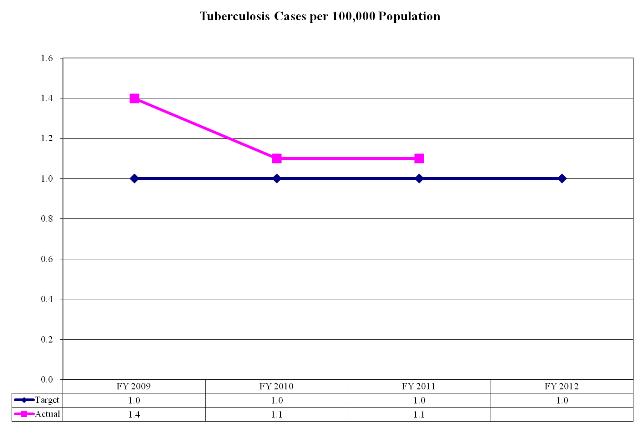 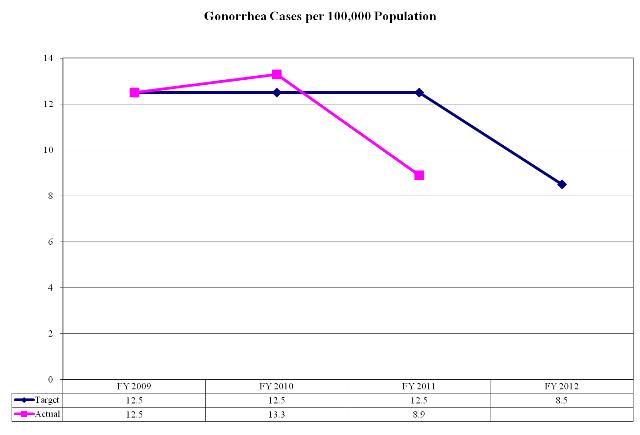 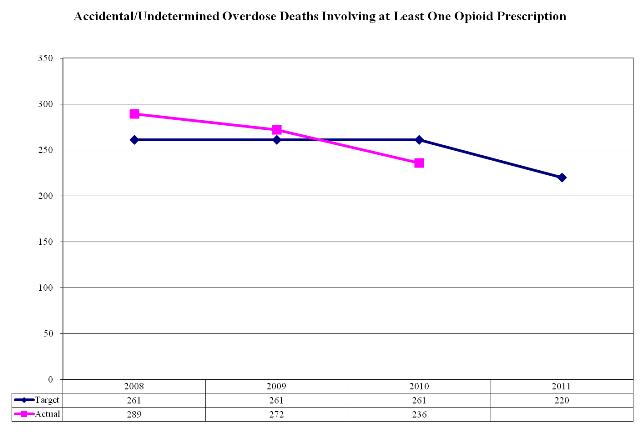 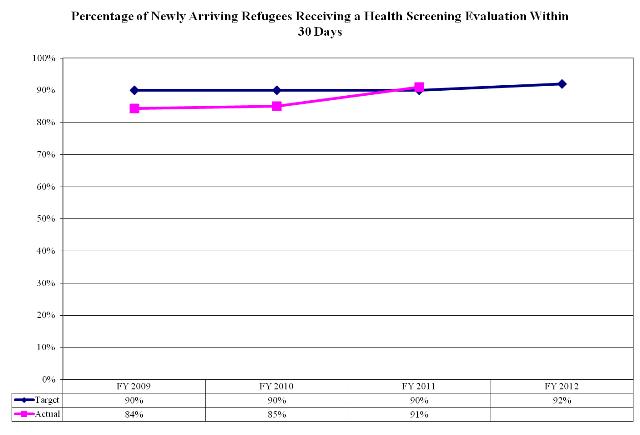 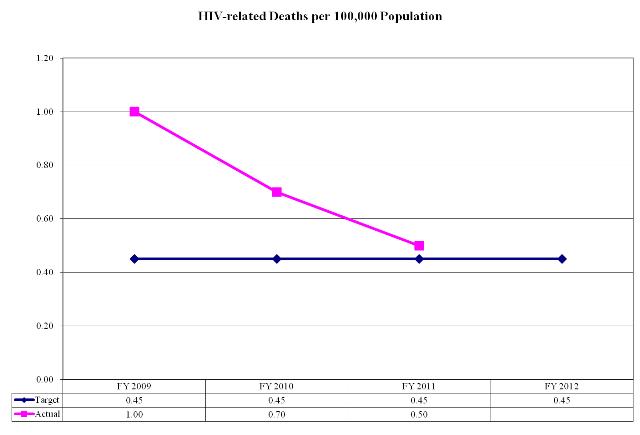 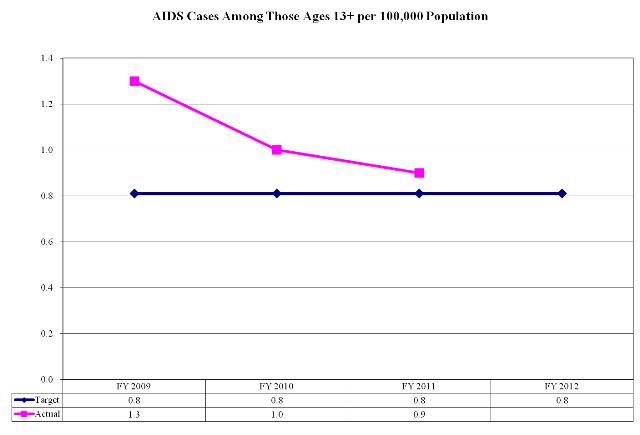 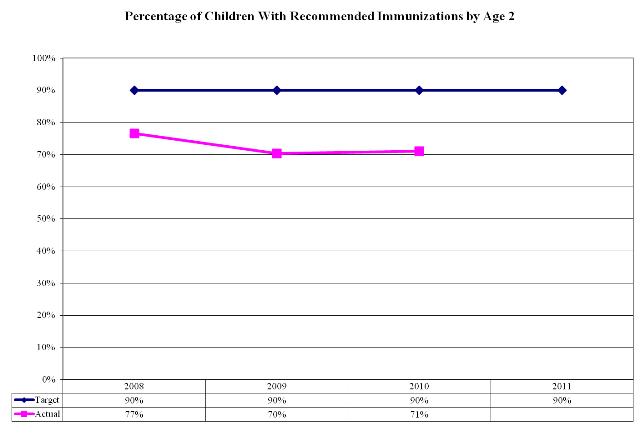 Funding Detail Effective FY 2010 the immunization and Utah State Immunization Information System programs have their expenditures recoded in the Epidemiology Program. Prior to FY 2010, these expenditures are part of the Maternal and Child Health program within the Family Health and Preparedness line item.
Function The Bureau of Microbiology provides laboratory testing and consultation services for local health departments; hospitals, clinics, labs, and physicians throughout Utah; the Utah Department of Agriculture; State Mosquito Abatement Districts; the Department of Environmental Quality; the Division of Family Health and Preparedness Services; and the State Medical Examiner. The areas of support include: newborn screening, sexually-transmitted diseases (HIV, syphilis, chlamydia, and gonorrhea), agents of bioterrorism surveillance, respiratory virus surveillance and subtyping, arbovirus surveillance, virology, rabies testing, bacteriology, mycology, mycobacteriology, parasitology, as well as outbreak control (food and waterborne), and communicable disease outbreak support, i.e. - influenza, tuberculosis, and food borne diseases. The Bureau works closely with the Bureau of Epidemiology to provide test data for disease surveillance and statistics across the entire State. The Bureau also works closely with State and federal partners such as health care workers, local public health, fire, Postal Inspection Service, FBI, law enforcement, military, and Indian tribal governments to provide training on safe packaging and shipping of specimens for testing, interpretation of results, emergency preparedness, and other services provided by the Bureau. The Bureau also provides local health departments with specimen collection kits and packaging and shipping materials to send specimens to the laboratory. Performance 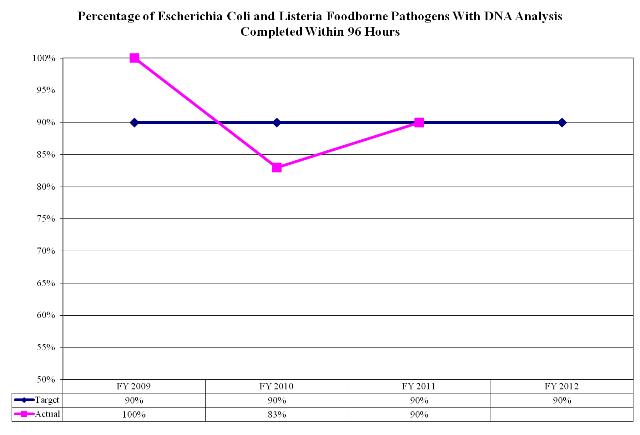 Funding Detail
Program: Office of the Medical Examiner Function The Office of the Medical Examiner (OME) is responsible for the investigation and certification of sudden and unexpected deaths that occur within the borders of the State. The specific circumstances surrounding any given death which place it under the jurisdiction of the OME are specified in UCA 26-4-7, such as:
The OME pays for roundtrip transportation of bodies under its jurisdiction. A contracted transportation service is used along the Wasatch Front; funeral homes provide all other transportation. Funding Detail
Program: Chemical and Environmental Services Function The Bureau of Chemical and Environmental Services provides testing of water, soil, and air for toxic contaminants to monitor the environment to assure compliance with health and safety standards, and to respond to emergencies such as chemical spills and contaminated drinking water. The tests, requested primarily by the Department of Environmental Quality and the Department of Natural Resources, assist those departments in assessing the safety of the environment. The Bureau also serves private agencies. The United States Environmental Protection Agency certifies the State laboratory as the principal laboratory for water testing. The laboratory program also tests for chemical agents in clinical samples in response to chemical terrorism incidents as a result of federal funding from the Center for Disease Control and Prevention (CDC) for the Public Health Preparedness Program. The laboratory tests and analyzes heavy metals, cyanide, volatile organic chemicals, tetramine, and other toxic chemicals in samples to determine exposure of these chemicals to humans. The Bureau's Chemical Preparedness Program is funded by the Centers for Disease Control and Prevention's Bioterrorism Program. The Bureau has been approved by the Environmental Protection Agency (EPA) to be a member laboratory for EPA's Environmental Response Laboratory Network, and Water Laboratory Alliance program to assist EPA in meeting laboratory testing needs in a National or local emergency situation. Funding Detail
Function The Bureau of Forensic Toxicology provides drug and alcohol analysis for law enforcement agencies to determine driving under the influence violations, including automobile homicides, sexual assaults, and other crimes. In addition, the Bureau provides testing for drug, alcohol, and other poisons in autopsy specimens to assist the Office of the Medical Examiner in determining the cause of death. Additionally, Bureau staff provide expert witness testimony on alcohol and drug impairment in courts statewide. Funding Detail
Program: Laboratory Improvement Function The Bureau of Laboratory Improvement sets and enforces standards for those laboratories that perform tests that impact public health. The Bureau provides two types of laboratory classification certification, clinical and environmental. The Clinical Lab Certification is under the authority and direction of the federal Centers for Medicare and Medicaid Services. The Environmental Lab Certification is under the authority of the Utah Code and the United States Environmental Protection Agency and works closely with the Utah Department of Environmental Quality to maintain adequate certified laboratory capacity. The Bureau is responsible to investigate complaints regarding the quality of the tests performed at certified environmental laboratories. Additionally, the Bureau provides quality assurance assistance, safety training, and technical services within the Utah Public Health Laboratory. Funding Detail
Program: Communicable Disease Control Function This program has been combined with the Epidemiology Program effective FY 2011. Funding Detail
|